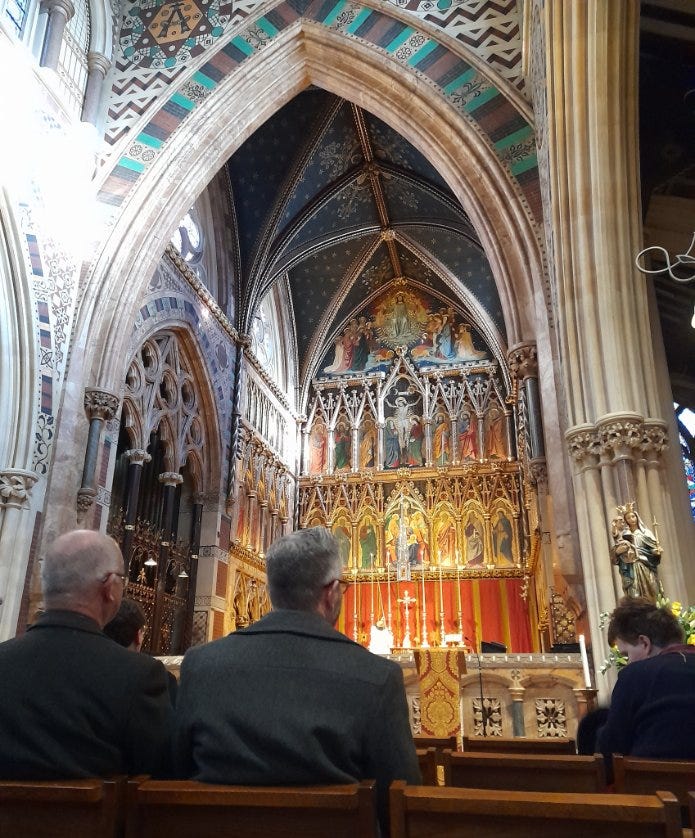Joost wrote an entertaining piece about the statue of King Charles I that stands at the top of Whitehall on Trafalgar Square. From horseback, the stylish monarch looks towards the Palace of Westminster, the British parliament building. It is, as my esteemed colleague noted, more likely that Charles is gazing towards Banqueting House, halfway up Whitehall. This building is all that remains of Whitehall Palace where Charles was beheaded in 1649 by Oliver Cromwell's Roundheads.
This is not the only statue of Charles. On the east side of St Margaret's (the church of the House of Commons) opposite Westminster Hall, stands a lead bust of Charles. It was found in a scrapyard in Fulham around 1945 by Hedley Hope-Nicholson, secretary of the Society of King Charles the Martyr. On this site, Charles is looking at Cromwell who stands in the Parliament grounds. Cromwell's head is bent slightly forward, as if he dares not look at the man he murdered.
Charles’ death is commemorated each year on the anniversary of his death, 30 January, with a mass, sometimes held at Banqueting House, sometimes at All Saints Margaret Street. All Saints is an Anglo-Catholic church that is a lot more Roman Catholic than Rome. The mass is organised by the aforementioned Society of King Charles the Martyr. Lovingly his praise we sing/ England’s Martyr, England’s king!’ sing the two hundred attendees at the beginning of the nearly two-hour high mass. Some women wear veils.
While the priests, three young men, prepare the altar for the Eucharist, a real tearjerker of a hymn is sung. The death of the very devout king, who was not a great supporter of public representation, is portrayed as follows. In the very dead of winter / underneath a bitter sky / silent crowds in frozen horror / come to see their Sovereign die / silent stand the surly troopers / silent fall the people’s tears / silent steps he to the scaffold / silent lips are moved to prayers.
I remember a sermon from a few months before the coronation of the current King Charles. Father Nicholas Johnson, wearing a black bonnet, expressed his concerns about the upcoming ceremony in Westminster Abbey. ‘Let us hope he will not shorten the ceremony too much,’ It was thought that three hours would not be too long. Especially when you consider the coronation of Charles I. He entered Westminster Abbey at ten in the morning and did not come out again until three.’
The holiest moment in the comemorative mass follows the Eucharist, when the congregation comes forward to venerate ‘the relic’ with a kiss. What is the relic? Two royal hairs that were plucked from Charles’ beard in 1813 at the opening of his tomb.





Oh my goodness! Venerate the two hairs from a beard! I’m not going to mention this to the Trump lovers, the veneration of his toupee will be proposed..